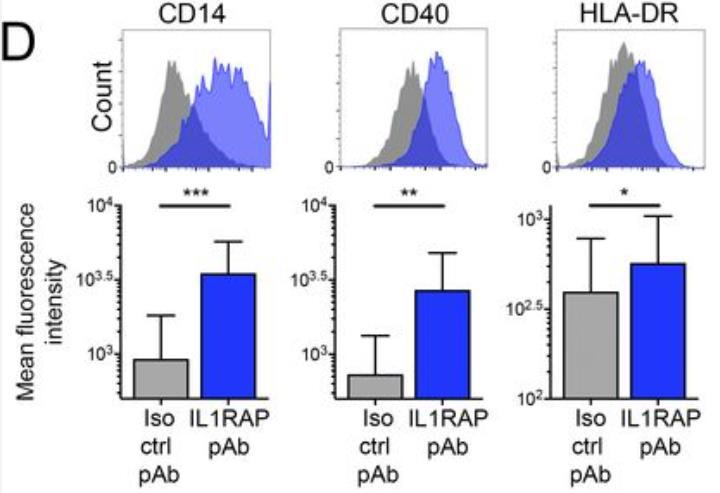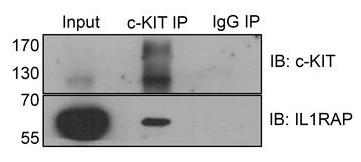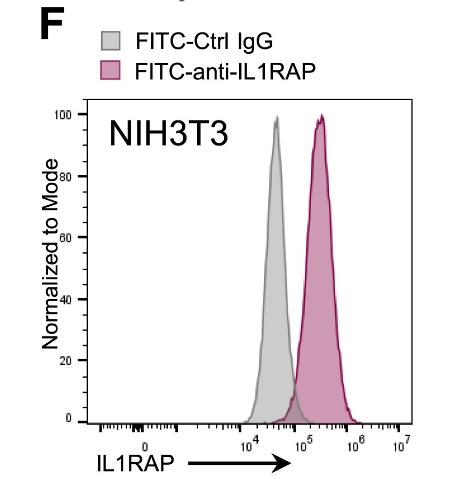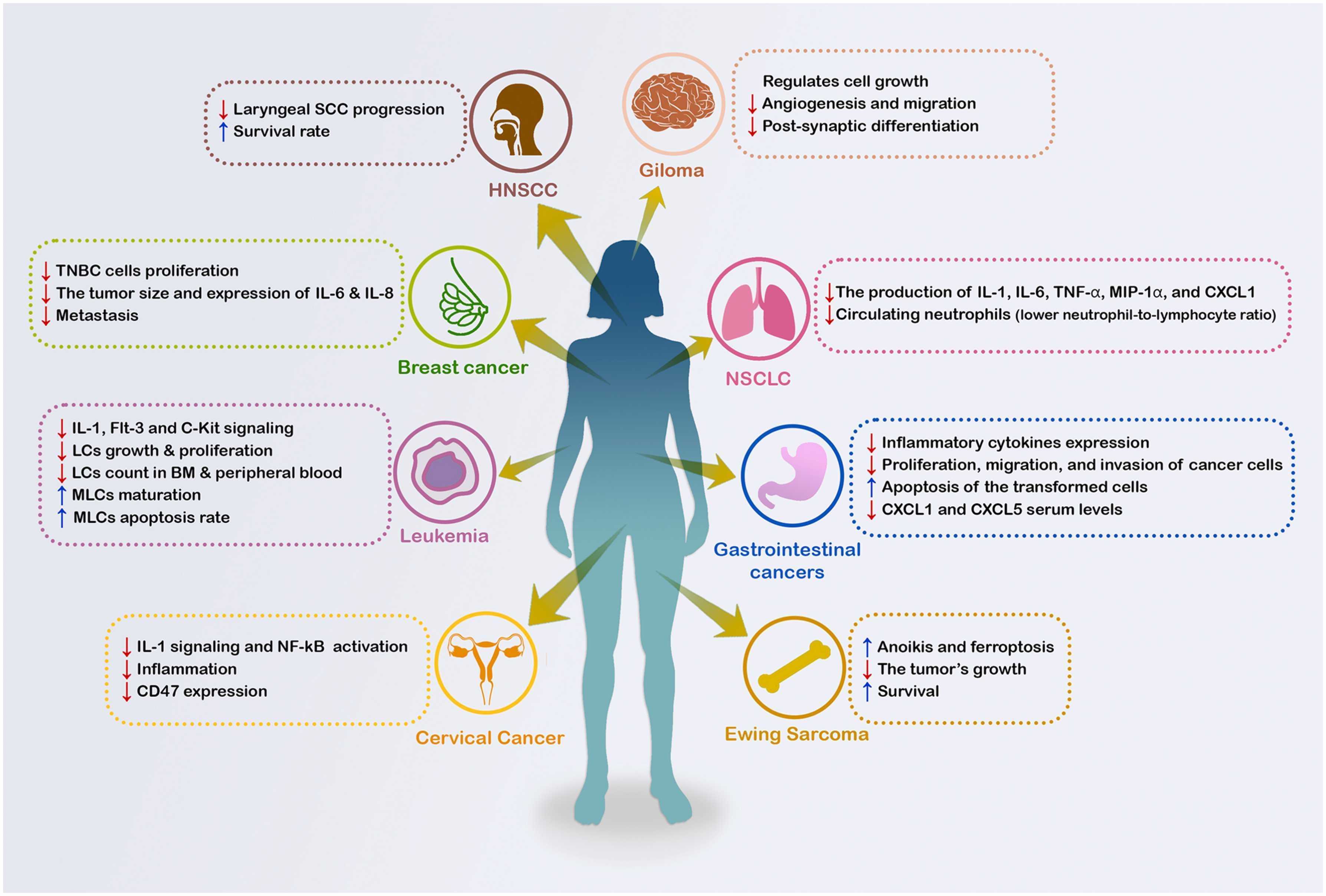Recombinant Human IL1RAP protein, His-tagged
| Cat.No. : | IL1RAP-2256H |
| Product Overview : | Recombinant Human IL1RAP (Met 1-Glu 359) protein was fused to His-tag at C-terminus and expressed in human 293 cells (HEK293). |
| Availability | April 16, 2025 |
| Unit | |
| Price | |
| Qty |
- Specification
- Gene Information
- Related Products
- Case Study
- Application
- Download
| Species : | Human |
| Source : | HEK293 |
| Tag : | His |
| Protein Length : | Met 1-Glu 359 |
| Form : | Lyophilized from sterile PBS, pH 7.4 |
| Molecular Mass : | The recombinant human IL1R3 consists of 350 amino acids and has a predicted molecular mass of 40.7 kDa. In SDS-PAGE under reducing conditions, the apparent molecular mass of rhIL1R3 is approximately 50-55 kDa due to glycosylation. |
| Endotoxin : | < 1.0 EU per μg of the protein as determined by the LAL method |
| Purity : | > 98 % as determined by SDS-PAGE |
| Storage : | Samples are stable for up to twelve months from date of receipt at -20°C to -80°C Store it under sterile conditions at -20°C to -80°C. It is recommended that the protein be aliquoted for optimal storage. Avoid repeated freeze-thaw cycles. |
| Reconstitution : | It is recommended that sterile water be added to the vial to prepare a stock solution of 0.2 ug/ul. Centrifuge the vial at 4°C before opening to recover the entire contents. |
| Gene Name | IL1RAP interleukin 1 receptor accessory protein [ Homo sapiens ] |
| Official Symbol | IL1RAP |
| Synonyms | IL1RAP; interleukin 1 receptor accessory protein; interleukin-1 receptor accessory protein; C3orf13; IL 1RAcP; IL1R3; IL-1R3; interleukin-1 receptor 3; IL-1 receptor accessory protein; interleukin-1 receptor accessory protein beta; IL-1RAcP; FLJ37788; |
| Gene ID | 3556 |
| mRNA Refseq | NM_001167928 |
| Protein Refseq | NP_001161400 |
| MIM | 602626 |
| UniProt ID | Q9NPH3 |
| ◆ Recombinant Proteins | ||
| IL1RAP-304H | Recombinant Human IL1RAP Protein, His-tagged | +Inquiry |
| IL1RAP-1766H | Recombinant Human IL1RAP Protein, His-tagged, Site-specific PE-Labeled | +Inquiry |
| IL1RAP-066C | Active Recombinant Cynomolgus IL1RAP protein, His-tagged | +Inquiry |
| Il1rap-444M | Recombinant Mouse IL1RAP Protein, Fc-tagged | +Inquiry |
| IL1RAP-305H | Recombinant Human IL1RAP Protein, Fc-tagged | +Inquiry |
| ◆ Cell & Tissue Lysates | ||
| IL1RAP-2730HCL | Recombinant Human IL1RAP cell lysate | +Inquiry |
Case 1: Mitchell K, et al. J Exp Med. 2018
Interleukin-1 receptor accessory protein (IL1RAP) is frequently overexpressed in acute myeloid leukemia (AML) and related myeloid malignancies, even at the stem cell level, suggesting its potential as a therapeutic target. Despite this, the intrinsic functions of IL1RAP in AML cells remain largely unexplored. This study demonstrates that IL1RAP can be effectively targeted to combat AML both in vitro and in vivo, without affecting normal hematopoietic cells. Interestingly, IL1RAP's role extends beyond the IL-1 receptor pathway, as it also interacts with FLT3 and c-KIT, two receptor tyrosine kinases crucial for AML development, to promote signaling and proliferation.

Fig1. Expression of macrophage differentiation markers in THP-1 cells by flow cytometry 24 h after addition of 150 μg/ml IL1RAP pAb.

Fig2. Coimmunoprecipitation of endogenous c-KIT in protein lysates from THP-1 cells.
Case 2: Mulholland M, et al. Cardiovasc Res. 2024
This study utilized single-cell RNA sequencing from human atherosclerotic plaques, highlighting IL1RAP expression alongside related cytokines like IL1B and IL33. Researchers confirmed IL1RAP's presence in plaques and adventitia through histology and identified it on plaque leukocytes in mice. In an atherosclerosis mouse model with a high-cholesterol diet, treatment with the anti-IL1RAP antibody led to a 20% decrease in plaque size and reduced leukocyte accumulation. This treatment also decreased the expression of genes like Cxcl1 and Cxcl2, which are linked to leukocyte recruitment, in the treated mice. In vitro, IL1RAP blockade curbed the release of CXCL1 from macrophages and fibroblasts induced by IL-1, IL-33, and IL-36.

Fig1. Representative histogram of IL1RAP expression on carotid plaque CD14+ myeloid cells.

Fig2. Expression of IL1RAP on NIH3T3 fibroblasts determined by flow cytometry.
Recombinant Human IL1RAP protein, also known as Interleukin-1 receptor accessory protein, is a crucial component in the interleukin-1 (IL-1) signaling pathway, which plays a significant role in the immune response and inflammation. This protein is required for the signaling of IL-1, IL-33, and IL-36 receptors, and it is involved in the activation of downstream inflammatory pathways. It is expressed in various cells, including leukemic stem cells and cells in hematological malignancies and solid tumors such as pancreatic cancer.
In the context of medical applications, IL1RAP has been identified as a potential therapeutic target in cancer immunotherapy. Its overexpression has been observed in various malignancies, and targeting IL1RAP could lead to reduced cell viability, invasiveness, and clonogenic growth in cancer cell lines. In pancreatic cancer, for instance, IL1RAP knockdown significantly impacts cell growth, and inhibition of downstream kinases like IRAK4 can result in reduced tumor growth in both cell lines and xenograft models.
Moreover, IL1RAP has been implicated in the pathogenesis of neuropsychiatric diseases, such as glioma, Alzheimer's disease, and schizophrenia. Its role in regulating neural synapse formation and its involvement in the molecular link between the immune and nervous systems suggest potential applications in the diagnosis and treatment of these conditions.
In terms of research, the recombinant protein allows for detailed study of IL1RAP's function and its interactions with other components of the immune system. This can lead to a better understanding of the complex signaling networks in which IL1RAP is involved and may contribute to the development of novel therapeutic strategies.

Fig1. The effects of IL-1RAP targeting in solid and hematologic malignancies. (Ali Zarezadeh Mehrabadi, 2024)
Not For Human Consumption!
Inquiry
- Reviews
- Q&As
Ask a Question for All IL1RAP Products
Required fields are marked with *
My Review for All IL1RAP Products
Required fields are marked with *
Inquiry Basket


